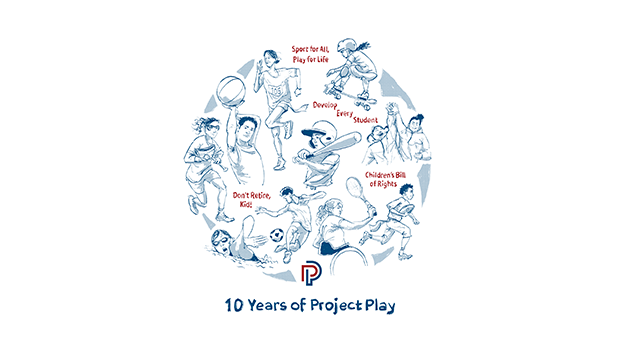From wildfires and typhoons to rising temperatures, natural disasters and severe weather are disrupting sporting events around the world. This impacts both competitive and recreational athletes’ ability to participate in many sports and affects people of all ages and backgrounds.
Against this backdrop, the Aspen Institute’s Sports and Society Program gathered a group of experts to dissect this issue. The conversation included David Goldblatt, author of Playing Against the Clock, Tim Leiweke, CEO of Oak View Group and developer of the new Climate Change Pledge Arena, and US Olympic biathlete Susan Dunklee. Together they discussed the impact of climate change on global sports, including what the industry can do now to ensure a more sustainable future. Here’s what they shared:
While global sports is a victim of climate change, it’s also a contributor.
Although no one has done a full carbon edit of global sports, Goldblatt says the industry’s output is $5-6 billion annually and that it generates more transport than other sectors, creating approximately 0.6-0.8 percent of all global emissions. In addition to urging sporting institutions to be carbon zero in the next decade, he says the global sportswear industry must be more transparent about the carbon it produces and make a similar net zero commitment. “The best sports franchises are making changes,” Goldblatt said, “but we still need to bring others along. What will it be like playing futbol outdoors in Africa in ten years? It might not be possible.”
Sports venues are adopting more sustainable practices, and creating a blueprint for others to follow.
Through a partnership between the City of Seattle, Oak View Partners, and Amazon, the Climate Pledge Arena is set to become the first carbon-neutral sports venue in the world when it opens in October. To achieve this, the venue will run completely on electric energy, use recycled water, eliminate single-use plastics, source food locally and donate waste to food banks, and encourage spectators to use alternative modes of transportation. “When we asked everyone to do this, it was traumatic. We didn’t have a blueprint,” Leiweke said. “We are the blueprint, and we are going to teach others to do it.” Already, UBS Arena in New York City has committed to carbon-neutral operations by 2024.
As climate change threatens the future of many sports, athletes are committed to finding solutions.
Dunklee says that snow availability is a major problem for winter sports and the industry needs to adapt to this reality. This includes making sacrifices that don’t always benefit athletes, like hosting more summer tournaments on “roller skis” and eliminating the use of fluorinated waxes, which make skis go faster, because of the chemical’s environmental impact. But the issue that most concerns the Olympian is maintaining an active fanbase when transportation to sporting events is a major cause of carbon emissions. “The biggest piece of the puzzle is the people coming to see a sport,” she said. “How do we convince them to come by more sustainable means? Long term, we need to think about ways to maintain and grow our fanbase while encouraging them not to travel.”
Anyone who enjoys sports should be talking about the impact of climate change.
Whether it’s on the sidelines of Little League games or at Dodgers Stadium, Goldblatt encourages people to start having conversations about the future of sports and the role they can play in reducing their carbon footprints. “Sports has the power to reach a large number of people who aren’t listening to scientists or politicians,” he says. “It can be a powerful tool in climate politics.”
This piece is part of In Focus: Rising to the Climate Challenge, a multimedia informational campaign that draws on the expertise of Institute programs. We look at four main facets of the climate change issue—labor and the economy, youth and education, public health and safety, and communities. To get campaign updates and other news from the Aspen Institute in your inbox, sign up for our newsletter.

